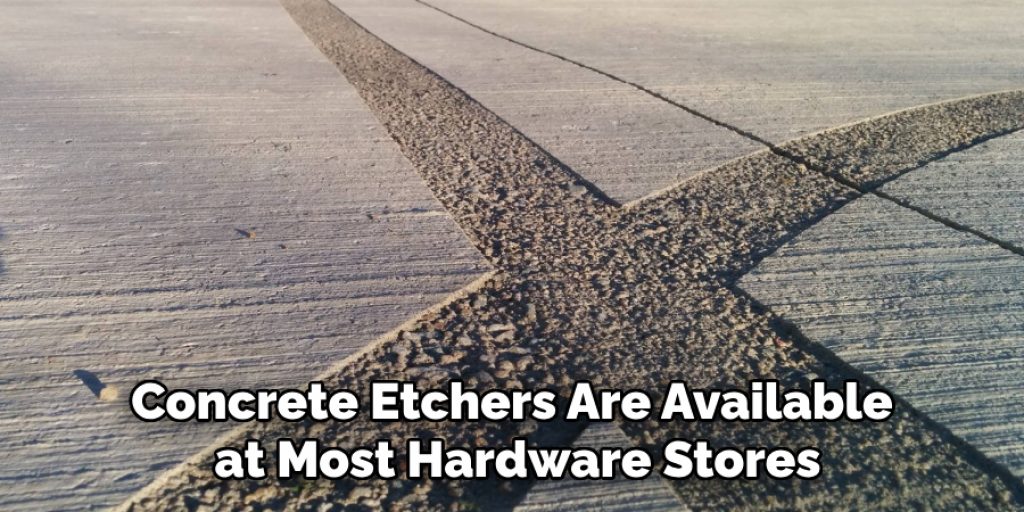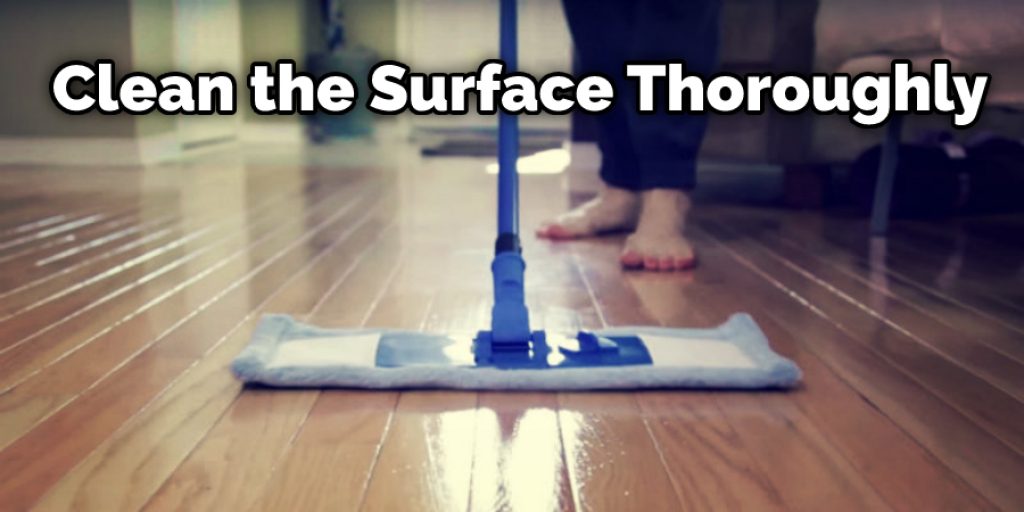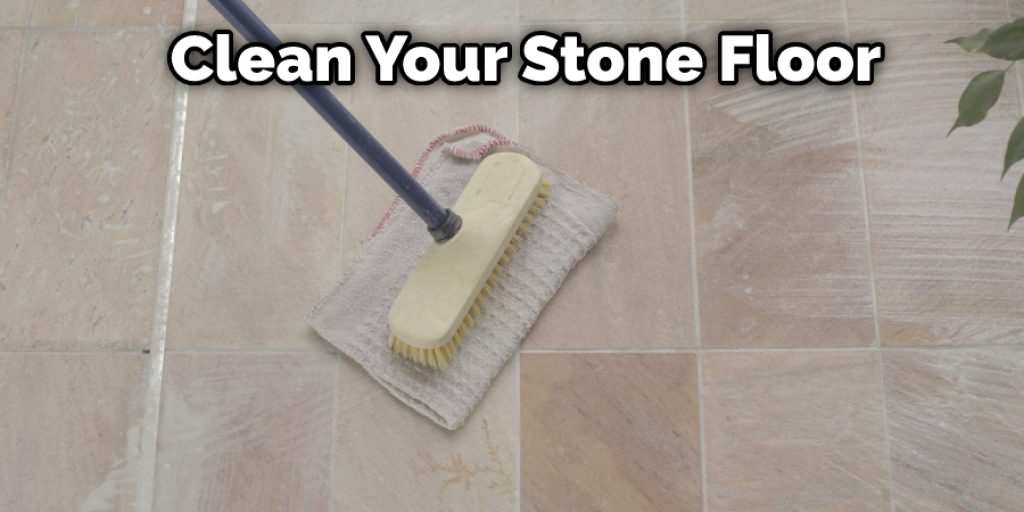How to Get Paint Off Stone Floor
Stone floors can be a beautiful addition to any home, but they require occasional upkeep to maintain their appearance. One of the most common tasks homeowners face is removing paint from stone flooring.
Thankfully, you can use a few methods to get the job done quickly and easily. In this blog post, we’ll walk you through some of the most popular techniques on how to get paint off stone floor. Read on to learn more!

10 Ways on How to Get Paint Off Stone Floor:
1. Non-caustic Chemical Removers:
Non-caustic chemical removers are available for purchase at most hardware stores. However, chemical paint removers should be your last resort, not your first. These ingredients are harmful to the environment and damage stone surfaces if not used properly.
2. Acetone/Nail Polish Remover:
Acetone is highly flammable, so be cautious when using it near flame or heat. In addition, acetone is a non-selective chemical remover, meaning that it will dissolve all organic material, not just paint. Nail polish removers containing acetone are readily available at any drug store and work great on nonporous surfaces like polished marble, glazed ceramic tile, and enamel paint.
3. Mineral Spirits:
Mineral spirits can be found in most hardware stores, but it is often hard to find pure mineral spirits without other additives that may damage the stone surface. In addition, mineral spirits are flammable and toxic, so use extreme caution when working with this chemical remover.
4. Paint Thinner/Mineral Oil:
Paint thinner is a petroleum distillate. It evaporates quickly, so you will need to gently wipe the stone surface with mineral spirits several times to remove all of the paint or varnish. Do not use paint thinner on plastic laminate countertops. Mineral oil is an effective non-caustic chemical remover, but it is flammable. Mineral oil can be purchased at most drug stores.
5. Mechanical Abrasion:
Lightly sand the surface using fine-grit sandpaper to remove the paint or varnish. Be careful when sanding painted surfaces because it is easy to gouge the paint. If you are unsure how much pressure to apply, test on an inconspicuous spot first.
6. Heat Stripping:
Heat stripping is used to remove paint and varnish from hardwood flooring. A heat gun or blow dryer should be all you need to apply the required amount of heat, but before you begin the healing process, do some testing on an inconspicuous spot first to make sure that there will be no discoloration or damage to the stone flooring.
7. Concrete Etchers:
Concrete etchers are available at most hardware stores. Etching is a process that dissolves the stone’s surface, thereby removing impurities and what remains is a porous surface with which paint can quickly bond. Always test concrete etchers on an inconspicuous spot first to ensure there will be no damage or discoloration of your stone floor.

8. Pressure Washers:
Most pressure washers are strong enough to remove paint from stone surfaces, but be careful not to damage the surface by using too much water pressure. Using a longer wand will help you control the application of force to equal it on all sides of your stone floor. In addition, a terry cloth bonnet can be used to scrub away stubborn paint stains from your stone floor after pressure washing.
9. Dry Ice Blasting:
Dry ice blasting is another process that will remove paint from stone surfaces by blasting it with dry ice, which is -109.3 degrees Fahrenheit. As with all chemical processes, test on an inconspicuous spot first to make sure there will be no damage or discoloration of your stone floor.
10. Heat Guns/Sand Blasters:
Heat guns and sandblasters use a high velocity to remove various materials from stone surfaces by exposing them to heat. Always use eye protection when working with heat guns or sandblasters, and test an inconspicuous spot to ensure that the high velocity of either tool will not damage the stone surface.
You can also check out to Use Poster Paint
Some Tips and Suggestions:
1. Scrape off as much paint as possible with a spoon or other flat object.
2. Heat the paint stain using a hairdryer and scrape it again when soft enough.
3. Mix dishwashing soap, baking soda, and water to form a paste. Scrub the mixture into the paint spot with a scrubbing brush or an old toothbrush.
4. Use an old towel to rub off the softened paint and dry with another towel.
5. If necessary, use a razor blade scraper to remove the remaining paint.
6. Mix one part muriatic acid (available for purchase at most hardware stores) to three parts water in a bucket and apply with a brush.
7. Scrub the mixture into the area using an old toothbrush or scrubbing pad, then rinse with clean water until all of the chemical residues have been removed.
Things to Do Before Removing Paint:
1. Weathering and Water Washing:
First, let’s take a look at weathering and water washing. This process aims to soften the paint so that it can be removed more easily. Unfortunately, as we know, paint doesn’t adhere well to surfaces such as stone, which are porous and unevenly textured (a sign of weathering).
2. Scraping:
After weathering and water washing, scrape the paint away from the surface. Scraping is not a good idea for painted surfaces because it can ruin their texture. However, a wire brush works well for scraped paint on stone floors. Just be sure to use only slightly solvent-dampened steel wool pads or abrasive brushes; otherwise, the stone’s surface will become even more scratched.
3. Steam Stripping:
After scraping, apply hot steam to the paint. Never use boiling water because it can damage the stone’s surface. The goal here is to keep the heat on the paint for as long as possible so that it completely softens and lifts off quickly with a scraper or wire brush.

4. Sanding:
After steam stripping, sand the surface to remove paint particles. Sandpapers may come in different grits (coarseness); usually, 36 or 40-grit papers are used for this purpose. However, remember that it’s essential not to use too much solvent when using silicon carbide paper to eat away the stone’s polished surface. Also, be sure to use dustless sandpapers.
5. Cleaning the Surface:
After sanding, clean the surface thoroughly. Use a vacuum to remove dust and debris so that these don’t get embedded into the paint layer. Next, use solvent to dissolve any minute paint residues on the surface. Finally, let it dry completely before using stone polish or wax.

How to Remove Paint from Tile and Grout?
Tile and grout are porous materials. If the paint dries on tile or grout, it tends to adhere very strongly. Removing paint from tile and grout can be extremely frustrating. If you spill paint while painting your walls, immediately wipe up the paint while still wet.
If you cannot wipe up the paint before it dries, remove the paint by applying acetone with a clean white cloth. To do this, apply a coat of acetone to the tile or grout and then use a clean white cloth to blot the excess paint. Allow it to soak for several minutes. Then scrub the remaining paint with the acetone soaked cloth. Finally, continue to apply fresh coats of acetone until all of the paint has been removed.
How Do You Clean Stone Floors?
Stone floors are becoming more and more popular due to their durability, beauty, and ease of maintenance. They can be used in any home room, from kitchens to bedrooms, from mudrooms to bathrooms. But as often as they are stylish and durable, stone flooring can be a headache when cleaning.
Many homeowners make the mistake of trying to clean their stone floors with normal household cleaners, and they soon find that these cleaners leave marks and damage the flooring, making it dull and less attractive. The following will give you some great tips on how how to get paint off stone floors. So be sure to check this full blog post.
What Are the Benefits of Using a Solution to Clean Your Stone Floor?
You can use a solution to clean your stone floor by applying it over the paint stain spilled on the stone surface. This is important because it will avoid unnecessary damage to the stone floor, which harsh chemicals may cause.
Cleaners designed for stone surfaces are milder than commercial cleaning products, so they do not contain abrasive ingredients. They are also safe for septic systems, making them a good choice if you have a stone floor in your bathroom.

Conclusion
Paint can be a great way to brighten up your home, but it has the potential to cause some serious damage if not removed correctly. If you are struggling with how best to remove paint from your stone flooring, here is what you need to know. Remember that these are just suggestions though you might need to experiment with different methods until you find one that works well for your particular needs.
The paint should come off with a few lights passed over the surface. It is important to use the least amount of pressure as possible so as not to cause damage to your stone floor. We hope this blog post has helped you learn how to get paint off stone floor. If you have any additional questions, please leave a comment below, and we’ll be happy to help!
You may also read How to Remove Glue Trap From Floor




